Grapevine is an interesting plant not only that it produce some of the best fruit on earth which can be transformed into the wine, but also as the plant itself. Grapevine is an interesting plant not only because it produces some of the best fruit on earth, which can be pressed into wine, but also as the plant itself. Grapevine is a permanent plant but differs from other permanent plants in many ways. To successfully maintain the grapevine and produce the best possible grapes and thus the wine, winegrowers need to know every grapevine part and its functions.
A grapevine is a climber that naturally grows on trees and bushes in high and wide shapes. In the vineyard, its growth is maintained with pruning in order to control the quantity and quality of the grapes.
Like any other plant, the grapevine also has its underground and above-ground parts. The underground part consists of an underground trunk with a root system. While the above-ground part consists of the trunk, canes, and shoots. On the one-year-old shoots, there are leaves, tendrils, flowers, and grapes.
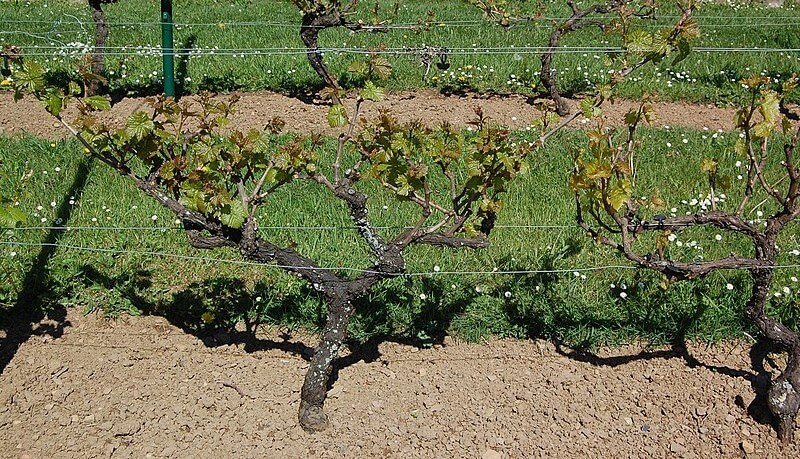
Above-ground parts of the grapevine
Trunk
The trunk is the main stem; it’s permanent and supports the above-ground vegetative (leaves and stems) and reproductive (flowers and fruits) structure of the grapevine. The height of the trunk and its branch vary according to the selected training system. In the cane-pruned training system, the top of the trunk is called the head. A fully developed trunk has arms – short branches from which canes and spurs originate. Depending on the selected training system, the arms are located in different positions. In a training system that utilizes canes (cane-pruned training system) – one-year-old wood arises from arms, usually near the head of the vines. While in a training system that utilizes cordons (cordon training with spur pruning), arms are spaced at regular intervals along their length. *Cordons are trunk extensions that usually grow horizontally along a trellis wire.
Canes
When the shoots mature and woody, it becomes a vine cane. Canes is, therefore, one year old, woody and matured shoot after the leaves have fallen off. Canes are the main concern for winegrowers during the dormant season. With the winter canes pruning, winegrowers manage vine size and shape and control crop quality in the coming season.
Buds
Buds develop in the leaf axil, right above the connection between the shoot and leave petiole. Inside each bud, there are three distinct growing points, each capable of producing a shoot, also known as primary, secondary and tertiary buds. Bud is actually a highly compressed shoot with all its parts, including cluster. At bud burst, normally, the primary bud begins to grow, but sometimes secondary or tertiary buds also grow, so there can be two or three shoots on the same axil. If the primary bud is damaged or freezes, then the secondary or tertiary buds grow in place of the primary bud. Compared to the primary bud, secondary and tertiary buds generally have little to no fruit.
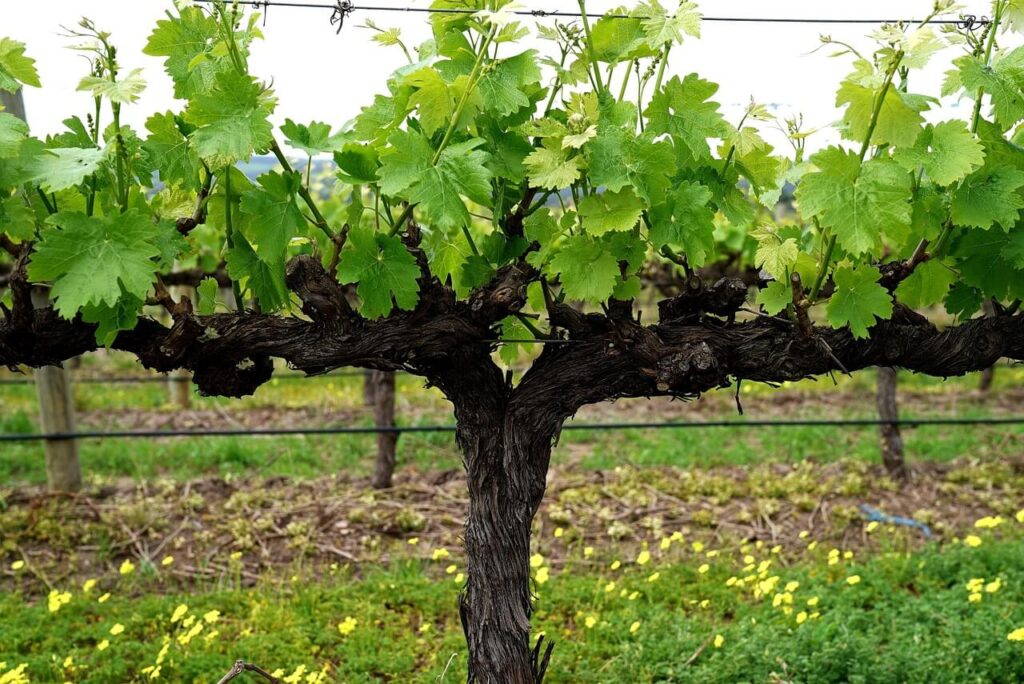
Shoots
Shoots are green stems that develop from buds and represent the primary growth structure of grapevines. The shoots that arise from primary (winter) buds are normally the fruit-producing shoots. The shoot consists of stems, leaves, tendrils and fruits. *Canopy is a collective term used to describe the grapevine shoots, leaves, and fruits.
Leaves
The grapevine leaves, like any other plant, provide nourishment and air for the plant. Leaves convert sunlight into usable energy for the plant. More leaves are well sunlit more organic compounds the grapevine can use for its growth. The shape and size of leaves are determined by the grapevine variety, as well as colour, which varies from light to dark green.
Tendrils
Tendrils are slender structures that appear on the top and sides of stems. They grow until the grapevine is ready for harvest; after the harvest, they become wooden in nature. Since the grapevine is a climber, it needs tendrils to coil around small objects, such as fences, trellises, etc., to reach up for the sun and heat. Tendril and flower clusters have a common development origin. Therefore, we might find flower designs developed at the end of the tendril.
Flowers and Grapes
Flower clusters grow on the opposite side of the leaves along the shoot. Most fruitful shoots develop from one to three flower clusters depending on the variety and growing conditions. Each cluster may contain only a few or up to several hundred flowers at the time of bloom; the number depends on the variety and environmental conditions. When fertilized, the flower clusters develop into clusters of grapes – the fruit set – and the berries start to grow.
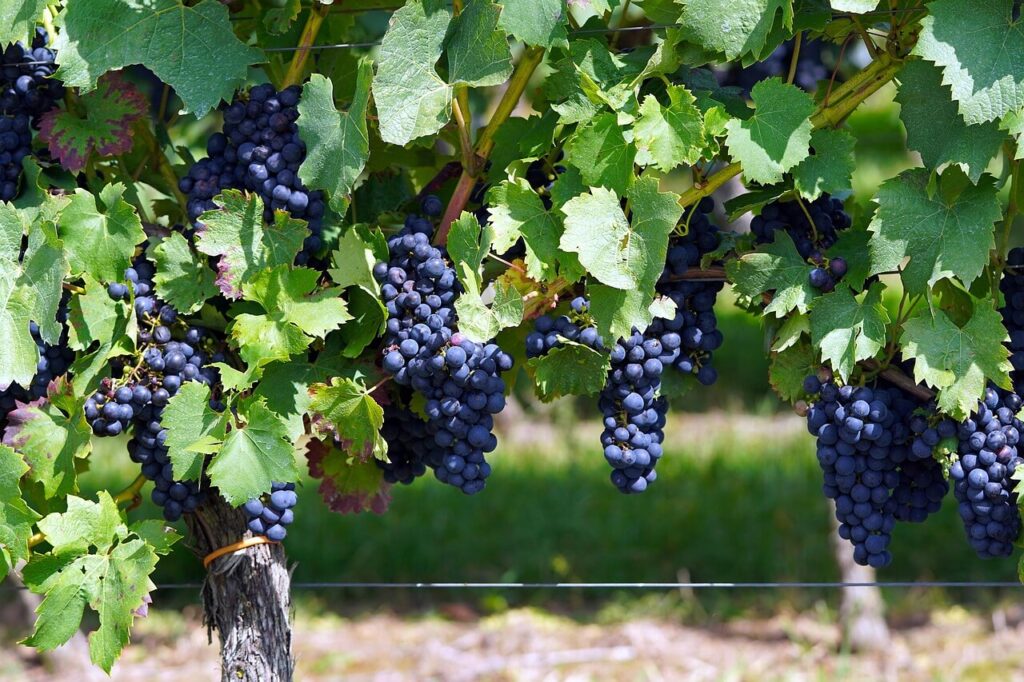
Read also: Grapevine flower development and structure
Underground parts of the grapevine
Root system
The roots of a grapevine are multi-branched structures that grow to various depths in the soil, depending on the variety (rootstock), soil, and climate. Some varieties develop very deep and almost vertical roots, while others have very flat and shallow root systems and, therefore, require deep, fertile soil.
Read also: Structure and function of grapevine root system
Sources:
Grapevine Structure and Function, by Edward W. Hellman
Grapevine Structure and Function, in Grape Grower’s Handbook, by Ted Goldammer
Lexicon of grapevine
Featured image by Hans

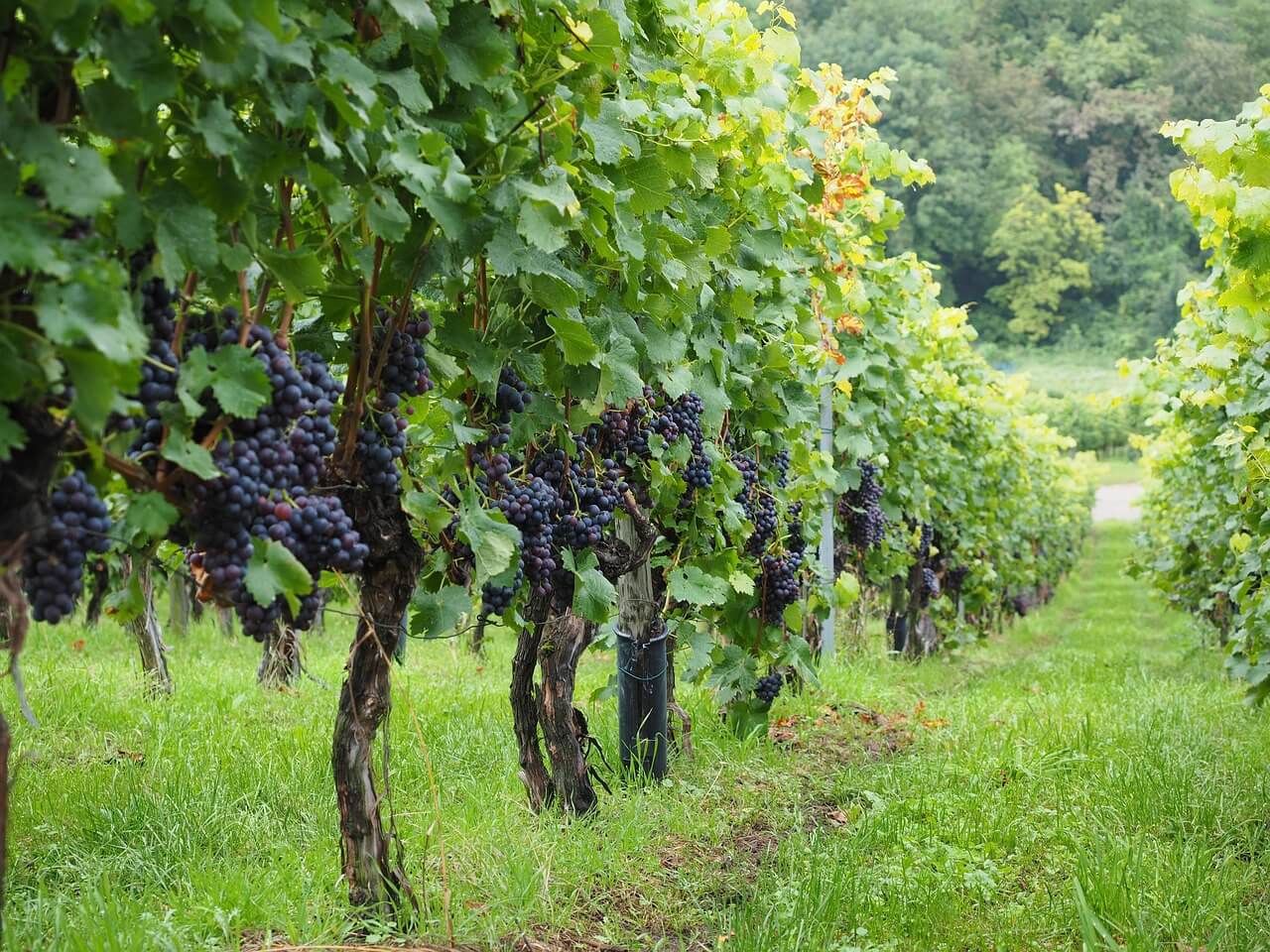
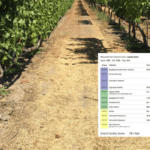

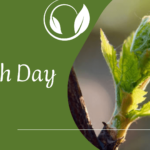
4 responses to “Overview of Grapevine Structure and Function”
thanks for sharing
You’re welcome 🙂
Good info…we bought a house that has 3 grapevines that have been neglected. They are quite small at this point, and mostly look like ground cover, but do have grapes! I am trying to find out how to care for them. I know I ned to get some sort of climbing apparatus but don;t want to damage them until the fruit ripens. suggestions on where i can find more info? I live in Vermont and have no ides what kind of grapes these are.
Hi, Dianne maybe visits the library for some viticulture handbook, as well as check our blog. 😉 For sure wait until dormant phase before making trellising system/structure.